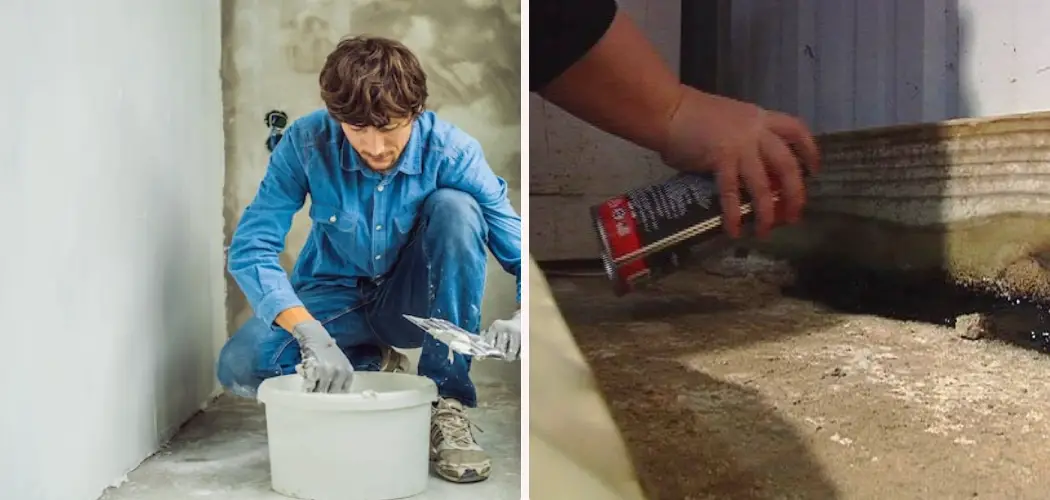Flex Seal is a great product for repairing roofing, windows, and other surfaces. However, it can be difficult to remove from concrete. In this blog post, we will show you how to remove flex seal from concrete easily and without damaging the surface. Follow these simple steps, and you will be Flex Seal free!
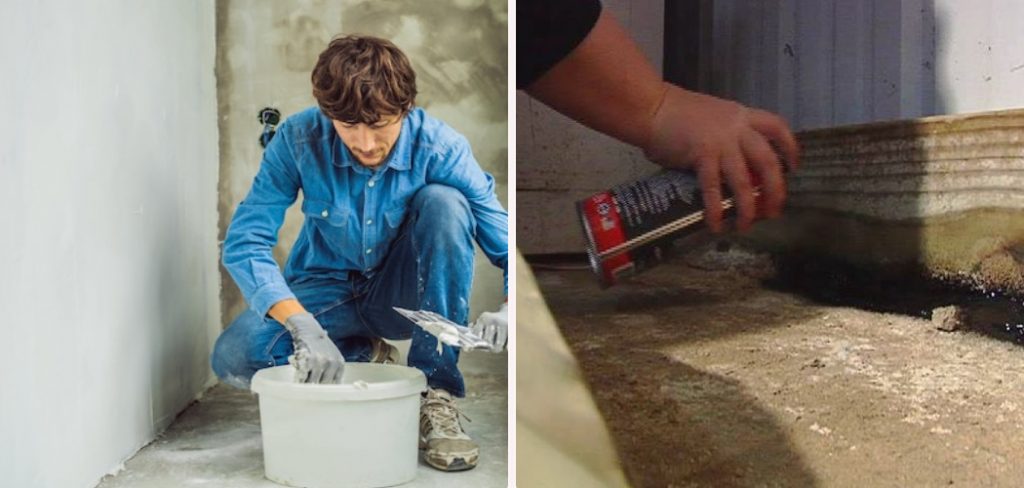
What Is a Flex Seal?
A flex seal is a type of sealant that can be used to repair leaks or gaps in various materials. It is made from a flexible, waterproof material that can be easily sprayed onto the surface to be repaired. Once it dries, the flex seal forms a strong bond that prevents water, air, or other liquids from passing through the gap.
In addition to its sealing properties, a flex seal can also insulate and protect surfaces from UV rays and corrosion. As a result, it is an ideal product for use in many applications, from repairing leaks in roofs and gutters to protecting boats and RVs from the elements.
Why It’s Important to Remove Flex Seal from Concrete?
When it comes to repairing cracked or damaged concrete, there is no better option than using a product like Flex Seal. This polyurethane-based sealant is renowned for its durable and long-lasting properties, making it ideal for repairing and protecting concrete surfaces.
However, one thing that many people don’t realize is that it is vital to remove Flex Seal from concrete once the job is done. Leaving this sealant on your concrete surface can lead to several serious problems down the road, including issues with moisture control and damage from UV light.
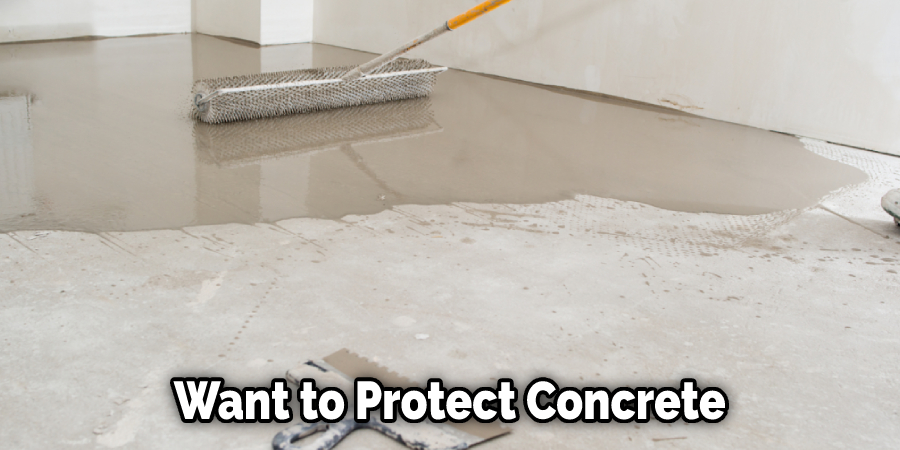
Therefore, if you want to protect your concrete and keep it looking great for years to come, be sure to remove any traces of Flex Seal before using the surface again. This simple step lets you ensure that your concrete won’t incur any unnecessary damage or wear over time.
Needed Materials:
Before we dive into the steps of removing Flex Seal from concrete, here are some materials that you will need for this process:
Plastic Scraper or Putty Knife:
These tools will help you scrape off the Flex Seal from the concrete surface without damaging it.
Mineral Spirits or Acetone:
These solvents are effective in breaking down and removing polyurethane-based sealants like Flex Seal.
Soft Clothes or Rags:
You will need these to wipe away excess solvent and residue from the concrete surface.
Water and Soap:
After the Flex Seal has been removed, you will need to wash the surface with soap and water to ensure that all traces of solvent are gone.
10 How to Remove Flex Seal from Concrete Step-by-Step Guide
Step 1: Determine
Before removing the Flex Seal from your concrete surface, it is important to determine how much time and effort will be required. You may have to use various tools or techniques to remove the sealant fully, so you must be prepared for this process. It is also essential to work in a well-ventilated and well-lit area for safety purposes. The area should also be free from any potential fire hazards. You may want to cover any nearby plants or furniture with plastic sheets to protect them from any accidental spills.
It is also important to note that different types of concrete surfaces may require different methods of removal. For example, smooth and polished concrete will be easier to remove Flex Seal from compared to rough or textured surfaces.
Step 2: Use a Scraping Tool
If the Flex Seal has just been applied, you may be able to remove it using a scraping tool such as a putty knife or paint scraper. This will depend on how thick the sealant is and how long it has been allowed to set. You should scrape against the concrete surface in gentle, quick motions until all of the Flex Seal is removed. Be careful not to scratch or damage the concrete. It may take some time to remove all of the sealant with this method, but it is worth a try.
You can also use a heat gun or hairdryer to warm up the Flex Seal, making it easier to scrape off. Just be sure not to apply too much heat as this could damage the concrete.
Step 3: Use a Chemical Stripper
If the Flex Seal is resistant to scraping, you may need a chemical stripper to remove it. There are many different types of strippers available, so be sure to choose one specifically designed for removing sealants from concrete.
Apply the stripper according to the manufacturer’s instructions, and let it sit for several hours to allow the sealant to soften. Then, use a scraper or wire brush to remove the softened adhesive. It is crucial to wear protective gloves and eyewear while working with chemical strippers, as they can be harsh on the skin.
Step 4: Use an Abrasive
When trying to remove flex seals from concrete, one of the most effective methods is to use an abrasive. This could consist of coarse sandpaper or even a wire brush, depending on how tough the sealant layer is. Start by lightly scrubbing the surface with your chosen abrasive material and check for any signs of success.

If the sealant is still present, try using more pressure or a slightly coarser material to continue scrubbing until all traces of flex seal have been removed. Finally, rinse the area thoroughly with water and allow it to air dry before sealing again.
Step 5: Wipe Away Residue
Once you have removed all of the Flex Seal from your concrete, it is important to wipe away any residue left behind. Use a clean cloth dampened with water or white vinegar to remove any leftover stripper, sealant, or debris. Allow the surface to dry completely before proceeding. The surface must be completely clean and dry before you can reapply Flex Seal or any other sealant.
The removal process may take a few attempts, especially if the Flex Seal has been on the concrete for an extended period. Be patient and continue to work until all of the sealant has been removed. You may also need to reapply a stripper or use multiple tools to achieve the desired results.
Step 6: Seal Again(Optional)
Finally, once you have successfully removed all traces of Flex Seal from your concrete surface, it is time to reseal the area. Ensure the concrete is completely dry before reapplying a new layer of sealant, following the same application instructions as before. Your concrete should be protected for years to come with regular maintenance and care!
It is essential to follow these steps carefully when removing Flex Seal from concrete. Improper removal can lead to damage and staining of the concrete surface, which could be costly to repair. The key is to be patient, work carefully, and use the appropriate materials and techniques for your specific concrete surface.
Step 7: Get a Professional Help(Optional)
If you are dealing with particularly stubborn stains or sealants, consider seeking the help of a professional concrete cleaner or restorer for additional guidance and assistance. With the right tools and techniques, you can easily remove Flex Seal from your concrete surface and prevent further damage from occurring in the future.
It is always better to be safe than sorry when it comes to maintaining the integrity and longevity of your concrete surfaces. You can also consult with professionals for tips on how to properly seal and protect your concrete from future spills or damage.
Step 8: Use Safety Precautions
When working with chemical strippers or abrasives, it is vital to use proper safety precautions. This includes wearing gloves, eye protection, and a face mask to avoid any potential harm from the chemicals or debris while removing Flex Seal.
You should also make sure to work in a well-ventilated area to avoid inhaling any fumes and use chemical strippers according to the manufacturer’s instructions for best results. It is always better to err on the side of caution and protect yourself when handling potentially hazardous substances.
Step 9: Test in a Small Area First
Before using any stripping agents or abrasives on your entire concrete surface, it is important to test them in a small, inconspicuous area first. This will allow you to see how effective the product is and if there are any adverse reactions to the concrete.
However, regardless of the method you choose, it is always important to follow proper safety precautions and manufacturer’s instructions to ensure a successful and safe removal process. You can also consult with professionals for additional tips and advice on the best methods for removing Flex Seal from concrete surfaces.
Step 10: Regularly Monitor and Maintain
After removing Flex Seal from your concrete, make sure to regularly monitor and maintain the surface to prevent any future damage. This includes regular cleaning and resealing as needed, as well as addressing any potential cracks or damage in a timely manner.
It is also recommended to avoid using harsh chemicals or cleaners on the concrete surface as they can potentially weaken the sealant and make it more susceptible to damage. The key is to be proactive in caring for your concrete surfaces to ensure their longevity and durability.
Now that you know how to remove Flex Seal from concrete, it is important to take the necessary precautions to prevent any damage. First, make sure the surface is completely dry before proceeding, and use a clean cloth dampened with water or vinegar to wipe away any leftover residue. Finally, reseal the area with a new sealant layer to protect your concrete against further damage and staining.
What do You need to Remove Flex Seal from Concrete?
Flex Seal is a household product that can be used for various projects, from waterproofing to sealing cracks. However, Flex Seal can be difficult to remove once applied, and it can leave behind a sticky residue. To remove Flex Seal from concrete, you need a putty knife, mineral spirits, and a stiff brush.
First, use the putty knife to scrape away as much of the Flex Seal as possible. Next, soak a rag in mineral spirits and use it to wipe down the area. Finally, scrub the area with a stiff brush to remove any remaining residue. With a little elbow grease, you should be able to remove Flex Seal from concrete without too much difficulty.
What Are the Possible Side Effects of Removing Flex Seal from Concrete?
Removing flex seals from concrete can be a difficult and potentially dangerous task. Because flex seal is such a thick and sticky substance, it can be tough to remove completely by scraping or scrubbing alone. Additionally, the harsh chemicals used to break down the flex seal may have an adverse effect on the concrete that they come into contact with.
Some of the potential side effects of removing flex seal from concrete include headaches, nausea, skin irritation, and damage to the underlying surface. Therefore, it is important to take all necessary precautions when attempting to clean up the flex seal and seek professional help.
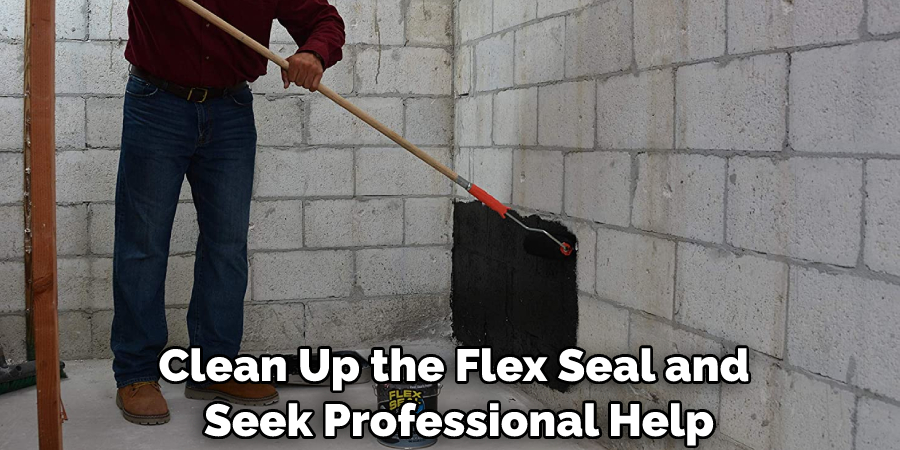
Ultimately, however, this task can be accomplished safely and effectively with a little bit of patience and careful planning. Keep reading for more information about how to remove flex seal from concrete.
Tips for Preventing Future Problems with Flex Seal
When it comes to maintaining and repairing your home, you may have heard of the miracle product known as Flex Seal. This unique material can fill cracks, seal leaks, and even prevent future problems from occurring.
However, if you want to get the most out of Flex Seal and prevent any issues with your home in the future, there are a few key tips that you should keep in mind.
First, it’s important to ensure that the surface on which you’re applying the Flex Seal is completely clean and dry. Any dirt or moisture can interfere with the bonding process and result in runaway leaks or other serious problems down the line.
Additionally, using only a thin layer of Flex Seal is key. A too-thick coating can create bubbles or otherwise weaken the material and make it less effective over time. Instead, apply a thin coat to get the job done right.
Finally, use extreme caution when working with this powerful adhesive. Always read all instructions carefully before starting your project and wear protective gear whenever necessary to avoid any unwanted accidents or mishaps.
With these simple tips in mind, you can ensure that your Flex Seal application goes off without a hitch and keeps your home safe for years to come.
Frequently Asked Question
Q1: Will Wd40 Remove Flex Seal?
A1: The answer to this question is, unfortunately, no. WD-40 is a lubricant and degreaser, but it is not a concrete cleaner. If the sealant is still wet, you may be able to use a power washer to remove it. If the sealant has dried, you will likely need to use a concrete cleaner or other specialized product to remove it.
Be sure to read the instructions carefully and follow any safety precautions listed on the product packaging. Some concrete cleaners can be quite harsh and may damage your concrete surface if used improperly. If you are unsure, it is always best to seek professional help.
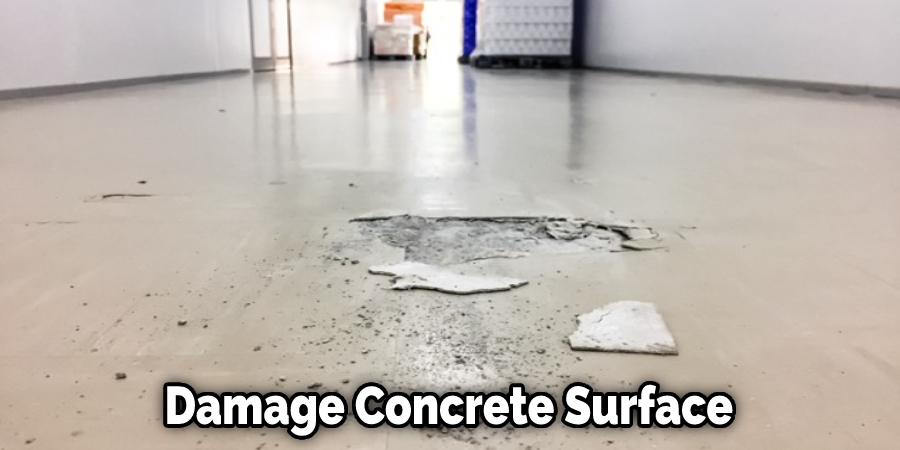
Q2: What Is the Best Way to Remove Flex Seal?
A2: The best way to remove Flex Seal from concrete is by using a combination of scraping, mineral spirits, and scrubbing with a stiff brush. Start by scraping away as much of the sealant as possible with a putty knife. Next, use a rag soaked in mineral spirits to wipe down the area and break down the remaining sealant. Finally, use a stiff brush to scrub away any leftover residue.
Some other methods that may work include using acetone or a specialized concrete cleaner. However, be sure to read instructions and take caution when working with harsh chemicals.
Q3: Can You Remove Flex Seal from Concrete with Heat?
A3: It is not recommended to use heat to remove Flex Seal from concrete as it can potentially damage the surface. Additionally, flex seal is designed to be resistant to heat, so using a heat source may not have much effect on the sealant.
Q4: How Can I Prevent Flex Seal from Damaging My Concrete?
A4: To prevent damage to your concrete, make sure to follow the instructions carefully when applying Flex Seal. Use a thin layer and avoid applying it on wet or dirty surfaces. If possible, test a small area first before fully covering the surface in Flex Seal.
Conclusion
If you’re looking for an easy way to remove flex seal from concrete, look no further! Here we’ll share a few tips on how to get the job done quickly and easily. Have you tried any of these methods? Let us know in the comments below. Thanks for reading our post about how to remove flex seal from concrete.
You May Also Read: How to Glue Ceramic Tile to Wood

